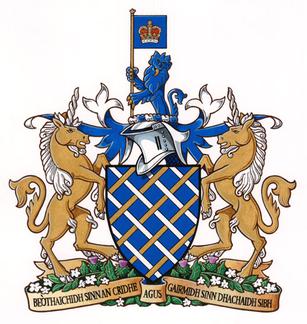
1967 is remembered as one of the most notable years in Canada. It was the centenary of Canadian Confederation and celebrations were held throughout the nation. The most prominent event was Expo 67 in Montreal, the most successful World's Fair ever held up to that time, and one of the first events to win international acclaim for the country. The year saw the nation's Governor General, Georges Vanier, die in office; and two prominent federal leaders, Official Opposition Leader John Diefenbaker, and Prime Minister Lester B. Pearson announced their resignations. The year's top news-story was French President Charles de Gaulle's "Vive le Québec libre" speech in Montreal. The year also saw major changes in youth culture with the "hippies" in Toronto's Yorkville area becoming front-page news over their lifestyle choices and battles with Toronto City Council. A new honours system was announced, the Order of Canada. In sports, the Toronto Maple Leafs won their 13th and last Stanley Cup.

The Canadian Centennial was a yearlong celebration held in 1967 to celebrate the 100th anniversary of Canadian Confederation. Celebrations in Canada occurred throughout the year but culminated on Dominion Day, July 1. Commemorative coins were minted, that were different from typical issues with animals on each — the cent, for instance, had a dove on its reverse. Communities and organizations across Canada were encouraged to engage in Centennial projects to celebrate the anniversary. The projects ranged from special one-time events to local improvement projects, such as the construction of municipal arenas and parks. The Centennial Flame was also added to Parliament Hill. Children born in 1967 were declared Centennial babies.

The Royal Edinburgh Military Tattoo is an annual series of military tattoos performed by British Armed Forces, Commonwealth and international military bands, and artistic performance teams on the Esplanade of Edinburgh Castle in the capital of Scotland. The event is held each August as one of the Edinburgh Festivals.

The Canadian Guards was an infantry regiment of the Canadian Army that served in the same role as the five regiments of foot guards in the British Army. The regiment was formed on 16 October 1953, by Lieutenant-General Guy Simonds, the Chief of the General Staff of the Canadian Army, with the redesignation of four separate battalions:

The Royal Nova Scotia International Tattoo is a show inspired by Military Tattoos given by military bands and display teams. It has taken place annually in Nova Scotia's capital, Halifax since 1979. It is currently held in the Halifax Scotiabank Centre.

A military tattoo is a performance of music or display of armed forces in general. The term comes from the early 17th-century Dutch phrase doe den tap toe, a signal sounded by drummers or trumpeters to instruct innkeepers near military garrisons to stop serving beer and for soldiers to return to their barracks and is unrelated to the Tahitian origins of an ink tattoo.

The Music Branch is a personnel branch of the Canadian Armed Forces (CAF). It is primarily composed of band musicians, and also deals with the selection and musical training of its recruits. The branch encompasses all the military bands in service in the Canadian Armed Forces. It is roughly the equivalent to the British Army's Royal Corps of Army Music (CAMUS).

The Royal Canadian Ordnance Corps was an administrative corps of the Canadian Army. The Royal Canadian Ordnance Corps RCOC can trace its roots back to the Canadian Stores Department. Formed in 1871, the Canadian Stores Department was a civil department of the Canadian Government. This civil service was charged with control of forts, ammunition, stores, buildings and an ordnance depot left by the departing British Military.

The Quebec City International Festival of Military Bands (FIMMQ) was a major cultural event in Quebec City that notably included a military tattoo by Canadian and foreign military bands as well as display teams. It has taken place annually in August in Quebec City from 1998 to 2013.
Rear-Admiral William Moss Landymore, OBE, CD was a Canadian naval officer. Born in Brantford, Ontario, Landymore joined the Royal Canadian Navy in 1936, but spent much of early career training with the Royal Navy. During World War II, Landymore returned to the Royal Canadian Navy and served aboard destroyers in the Battle of the Atlantic, surviving two sinkings. By the end of the war Landymore had taken a series of positions in Ottawa before returning to destroyer command during the Korean War. He was promoted through the ranks eventually becoming the first Commander of Maritime Command. Landymore became embroiled in a public feud with the Minister of National Defence following the Unification of the Canadian Armed Forces and resigned as a result. He died at Halifax, Nova Scotia.
The Regimental Band and Pipes was founded on the Citadel campus in Charleston, South Carolina, in 1909, with marine general Harry K. Pickett in command. The marching band makes up one of the twenty-one companies of the South Carolina Corps of Cadets. In 1991, the band participated in the Edinburgh Military Tattoo in Scotland, becoming the first military college selected for the honor. They returned in 2010 as the only unit from the United States to appear at the Silver Jubilee of the Tattoo and appeared again in 2015.

Canadian military bands are a group of personnel in the Canadian Armed Forces (CAF) that performs musical duties for military functions. Military bands form a part of the Music Branch of the CAF, composed of six full-time professional Regular Force bands, 15 Regular Force voluntary bands, and 53 part-time reserve force bands. Bands of the Music Branch are often badged with the unit or Canadian Forces base insignia that they support.
Major Sir Michael John Parker, was a British businessman who was a leading producer of large-scale military tattoos and large-scale events in the United Kingdom and abroad.
Colonel Ian Simon Fraser is a leading producer of large-scale military tattoos and events in Canada and overseas.

The Canadian Forces Tattoo 1967 was a series of military tattoos or displays performed by members of the Canadian military portraying more than three hundred years of Canada's military history. The Tattoo, which was the Canadian military's contribution to Canada's centennial year celebrations in 1967, toured the country from coast to coast. This was the largest such event in the history of the Canadian military.

The Royal 22e Régiment Band is the regimental band of the Royal 22nd Regiment. It is based at CFB Valcartier in Quebec and is assigned to the 2nd Canadian Division Support Group. It is the only French-speaking regular military band in Canada.

The Band of The Royal Regiment of Canada is a Canadian military band that serves as the official regimental band of the Royal Regiment of Canada. It is the oldest permanently organised band in the Canadian Forces. It is based at Fort York in Toronto and is assigned to the part of 4th Canadian Division's 32 Canadian Brigade Group. The ceremonial dress uniform of the band is a scarlet tunic and bearskin, similar to Grenadier Guards in the United Kingdom, with the only difference being the plume is red over white, as a homage to the former Canadian Guards regiment.

The Stadacona Band of the Royal Canadian Navy is a Canadian military band in the Royal Canadian Navy based in Halifax. It serves as official military band of the Maritime Forces Atlantic Command (MARLANT). It is one of six regular force military bands in the Canadian Forces. It provides musical accompaniment for ceremonial requirements of the East Coast Navy. The Stadacona Band usually performs at the Halifax dockyard to take part in the welcoming naval vessels. For over 75 years, the band's performances have been seen members of the Royal Family, the Governor General of Canada, the Prime Minister of Canada, foreign heads of state, and Canadian naval officials. The band has provided music for all graduation activities in the area.
The Band of the Royal Canadian Corps of Signals was a regimental military band in Canada based out of Canadian Forces Base Kingston in Ontario. It is a voluntary band, which means that its band members are not composed of full-time professional musicians. The band provided musical support for the community in the Kingston, Ontario metropolitan area as well as Ottawa–Gatineau.
The 48th Highlanders of Canada Pipes and Drums is an authorized pipe band in the Canadian Forces and is currently located at Moss Park Armoury in Toronto, Ontario. The current pipe major is Master Warrant Officer Iain Lang, who is concurrently the official piper to the Lieutenant Governor of Ontario.











